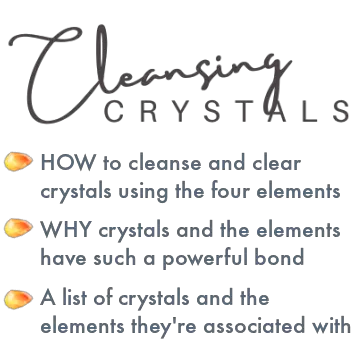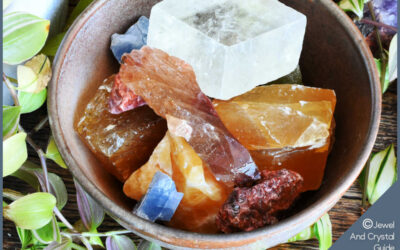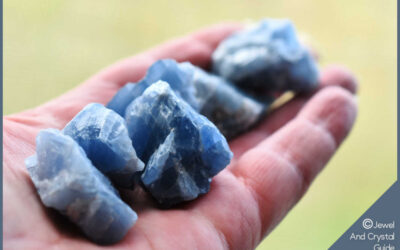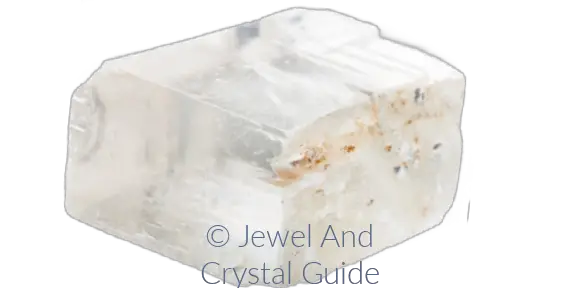
What is calcite
Calcite is mainly made up of calcium carbonate. There’s a lot of calcium carbonate around – it’s found in rocks, eggshells, and in the shells of marine organisms, snails, and pearls.
It also forms beautiful crystals!
While calcite crystals can be transparent (see-through) and clear, they also come in a range of colors, from soft whites and blues to vivid greens and reds. It’s this diversity that makes calcite a wonderful choice for jewelry, especially bracelets, necklaces, and beads.
Calcite has a very special optical property called “birefringence.” When light travels through a piece of clear, transparent calcite, the light splits into two rays. When you look at an object through such a crystal, you see two copies of the same object.
A lot of raw calcite has a smooth, shiny surface because it breaks so cleanly along its own cleavage lines. Cleavage lines are the lines where a crystal breaks when it comes under pressure, and calcite has three well-defined lines.
What calcite is good for
Calcite is often praised for its energetic and spiritual properties.
Rooted deep in the traditions of crystal healing, calcite is a beacon of energy and amplification, and its different colors resonate with different energies.
At the heart of calcite’s value is its ability to cleanse and recharge the chakras, the energy centers within the body. By intensifying positive energy, calcite clears blockages and paves the way for spiritual growth and healing.
Calcite crystal is also associated with mental clarity and insight. When used as a companion during meditative practices, it brings a deeper connection to inner wisdom, enhanced intuition, and memory retention.
If you want to know more, here’s my complete list of what calcite is good for and what the different crystal colors bring you.
Other names for calcite
Calcite gets its name from the Latin word “calx,” which translates to “lime.” This hints at its widespread use in the production of lime, which is an essential ingredient in cements and grouts.
But there are many types of calcite depending on what impurities, inclusions, and colors are in the crystal, and some of these have their own names. For example:
- Iceland Spar is a clear, transparent calcite. The name comes from historic deposits found in Iceland, and it’s said that Vikings used this crystal as a navigational tool to locate the sun’s position on any day, even an overcast one. By knowing the sun’s position, they could then determine direction and maintain their course.
- Dogtooth Spar is also known as dogtooth calcite. The name “dogtooth” comes from the crystal’s resemblance to the canine tooth of a dog, with its pointed, elongated shape. Dogtooth spar is often clear or white, but it can also be found in shades of yellow, brown, or even reddish when there are impurities in the crystal.
- Nailhead Spar looks a lot like the flat head of a nail, with flat terminations or “caps” on its crystals. These crystals range from clear and white to various other colors depending on their impurities.
Colors of calcite
Calcite gets its many colors from the minerals in the crystal, the conditions around the crystal when it formed, or from radiation. This article explains how crystals get their colors, if you’re interested in finding out more.
Here’s a list of colors calcite comes in, and a brief description of each:
- Blue Calcite: Blue calcite is known for its calming and relaxing properties. It’s often associated with enhancing communication and clarity of thought, and it’s linked with the throat chakra.
- Green Calcite: Green calcite evokes feelings of renewal and rejuvenation. It’s known for promoting healing, balance, and heart-centered compassion. This color aligns with the heart chakra.
- Orange Calcite: Vibrant and warm, orange calcite is an energizing stone. It’s used to enhance creativity, joy, and positivity, and it’s connected to the sacral chakra.
- Red Calcite: Red calcite is associated with vitality and motivation. It connects with the base or root chakra.
- Yellow Calcite: Radiating a cheerful vibe, yellow calcite boosts self-confidence and uplifts the spirit. This color is associated with the solar plexus chakra.
- White Calcite: Representing purity and cleansing, white calcite clears negative energy and increases positivity. It’s linked with the crown chakra.
- Clear Calcite: As the name suggests, clear calcite is transparent. It intensifies energy and is considered a “universal stone” for its versatile properties. Clear calcite often relates to multiple chakras, but is primarily tied to the crown chakra.
- Pink Calcite: Soft and nurturing, pink calcite is associated with love and compassion. It heals emotional wounds and encourages self-acceptance. The heart chakra is its spiritual anchor.
- Black Calcite: Less common than other colors, black calcite is a grounding stone. It’s associated with protection and scattering negative energies, and it connects to the root chakra.
- Brown Calcite: This earth-toned color has grounding properties, known for improving decision-making and strengthening our connection to the natural world. Brown calcite relates to the root chakra.
- Gray Calcite: Often seen as a neutral or balancing stone, gray calcite helps with transitions and change. It’s not traditionally linked to a specific chakra, but its grounding nature ties it to the root chakra.
Calcite versus other crystals
The difference between calcite and fluorite
Fluorite is a halide crystal that’s classed as semi-precious, but calcite is a calcium carbonate crystal that’s classed as a common mineral.
Fluorite is usually purple, but most calcite is white or colorless (even though it can be found in other colors).
To tell the difference between calcite and fluorite, do the tests I outline in this guide.
The difference between calcite and citrine
When people confuse calcite and citrine, they’re usually thinking of honey calcite.
Honey calcite has a warm honey color, ranging from pale yellow to deep golden hues, just like real honey. Citrine, on the other hand, has a yellow to brownish-orange color.
Though these crystals may get confused because of their similar colors, calcite and citrine are completely different crystals.
Honey calcite is mainly made up of calcium carbonate, while citrine is quartz made of silicon dioxide.
Honey calcite gets its color from the elements that make up the crystal but natural citrine gets its color from small amounts of iron (this isn’t the case for common man-made citrine – here’s how that citrine is made).
Click here to access my full guide + pictures on how to tell the difference between honey calcite and citrine.
The difference between calcite and quartz
Calcite and quartz are completely different crystals, though both crystals can be found in some of the same colors.
Calcite is a soft calcium carbonate, ranking 3 on the Mohs scale of hardness. Quartz is a much harder silicon dioxide, with a 7 rating on the same scale.
Find out more about the differences between calcite and quartz in my complete guide.
The difference between calcite and aragonite
Both calcite and aragonite crystals are mainly made up of calcium carbonate, but their structures are different and they’re found in different places.
Calcite is one of the most common minerals on Earth and can be found in various geological settings, including rocks like limestone. Calcite crystals usually form in calm waters as large, clear crystals. These crystals come in various colors, from clear to yellow, blue, green, and more.
Aragonite forms in wilder, rougher marine environments, often where shells and corals are. Its crystals are needle-like and tightly packed, and it’s often harder and denser than calcite. Aragonite comes in different colors, but the most common colors are white and brown.
Click here for all the differences between calcite and aragonite, and how to tell the difference between these crystals.
The difference between calcite and dolomite
Calcite and dolomite are different crystals but they can look quite similar, especially when they’re white or clear.
Calcite is mainly made up of calcium carbonate while dolomite is calcium magnesium carbonate.
Both crystals have the same crystal system. But calcite crystals form in different shapes (often in distorted cubes) and dolomite gives us more tabular crystals that look like flattened prisms – broad in two dimensions and much thinner in the third.
Here’s how to tell the difference between calcite and dolomite crystals.
The difference between calcite and halite
Calcite and halite crystals can be confused for each other, at least until you know what to look for.
Calcite is a mineral composed of calcium carbonate, while halite is rock salt made up of sodium chloride.
The easiest way to tell these crystals apart is to lick them. Calcite is tasteless but halite tastes salty, like the sea.
Raw calcite crystals often look like a distorted cube. I’d describe them as a squished box that looks like you pushed it on two opposite corners to make it slanted, so the corners aren’t at right angles.
Raw halite crystals often form as perfect little boxes, with all sides being roughly the same length and meeting at right angles. The edges are sharp, and the faces are flat and smooth.
Get a list of the differences between calcite and halite in my full guide here.
The difference between blue calcite and celestite
Most blue calcite has a soft, pale blue to a medium blue color. The color is typically smooth, even, and can be milky or cloudy.
Celestite is often a vibrant pale blue to sky blue, usually with a transparent or translucent quality to it.
If you’re looking at a crystal trying to tell which one it is, blue calcite generally looks like a light blue fog or mist, while celestite’s blue will remind you of gazing up at a clear, bright sky.
Here’s my complete guide on how to tell the difference between blue calcite and celestite.
The difference between calcite and gypsum
Calcite and gypsum are sometimes confused because they can look quite similar at first glance.
While both minerals can form clear crystals, gypsum (especially in its selenite variety) often has a more glass-like transparency than calcite.
In their raw form, long, clear, blade-like crystals are more likely to be gypsum as calcite usually comes in chunky, block-like masses.
Here’s my complete guide on how to tell the difference between calcite and gypsum.
Is calcite expensive?
Like all crystals, the cost of calcite depends on the quality, color, and size of the piece, as well as how many people want to buy it and how much is available.
A medium-quality calcite crystal costs about 50c to $2 per gram. Calcite is not as expensive as some other stones, but high-grade calcite will set you back up to $10 or more per gram.
Here’s a table with the average price ranges of calcite per gram:
| Quality | Average Price Range Per Gram (USD) |
| Low-grade calcite | $0.10 – $0.50 |
| Medium-grade calcite | $0.50 – $2 |
| High-grade calcite | $2 – $10+ |
Where to keep calcite
Many people put calcite in their living spaces to purify the environment and bring a sense of peace and harmony.
The best places to keep calcite are on your body near the right chakra for the crystal’s color, in your bedroom, and wherever you work or create things. Put calcite wherever you need to feel calmer, more focused, and more self-aware.
Click here to get all my ideas on where to keep your calcite and why.
How to cleanse and charge calcite
Calcite can be cleansed and charged using earth, fire, or wind. Put the crystal in healthy soil, the smoke of a burning smudge or incense stick, in moonlight, or in your own breath to purify and revitalize it.
Here are instructions on how to safely cleanse and charge calcite (and what to avoid at all costs).
Once you’ve charged your calcite, it’s good to meditate with the crystal (here’s a simple but effective meditation to try) and use affirmations like these to ask the crystal for what you need.
How to tell if calcite is real
If you have a calcite crystal and want to know if it’s authentic, a good way to tell is by looking at it and doing some simple tests.
Calcite can range from transparent (see-through) to opaque (not see-through). It’s usually clear or whitish but does come in different colors, and it often has a glassy shine to it.
If the crystal you’re testing is clear and transparent, check it for birefringence: Simply place the crystal on top of a pencil or object and look to see what the pencil or object looks like through the crystal. If you see two pencils then the crystal is birefringent and probably real calcite.
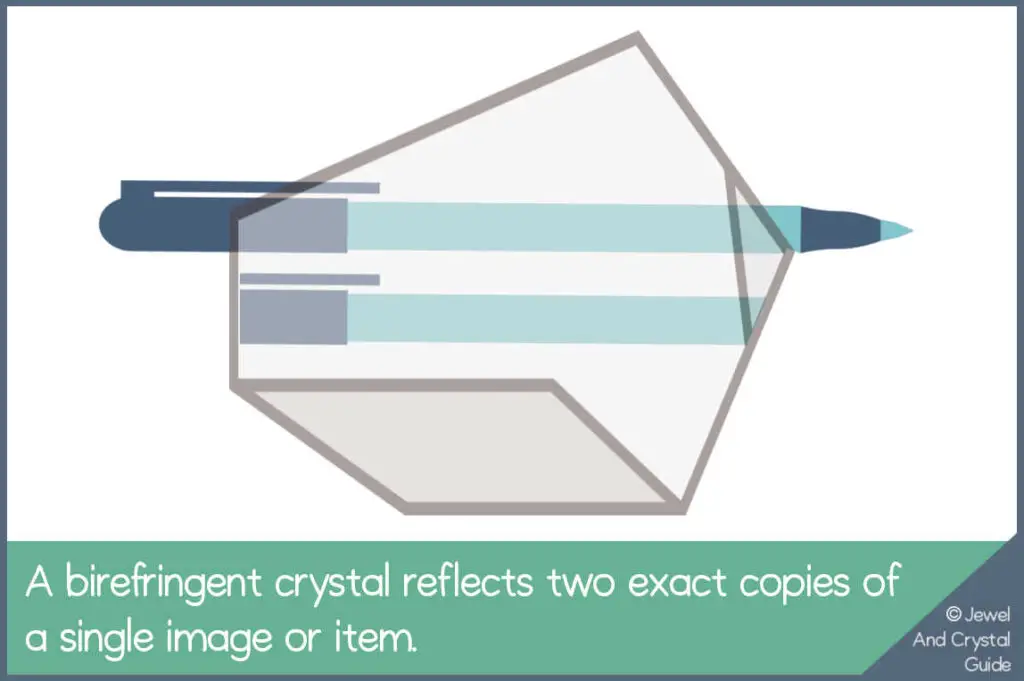
These are all things you can do to test a crystal at home, but a certified lapidist or jeweler can confirm your findings.
Here are all the ways to test if a calcite crystal is genuine or fake.
Who should wear calcite
While anyone can wear calcite, Aries, Taurus, and Pisces are believed to benefit most from wearing calcite crystal due to their astrological properties.
Calcite addresses these signs’ specific challenges and enhances their strengths, bringing a greater sense of harmony and well-being into their lives.
Here’s what each zodiac sign gets from wearing calcite
Want to remember this? Save this Guide To Calcite to your favorite Pinterest Board below!







